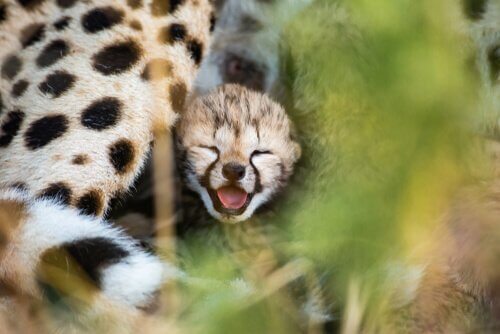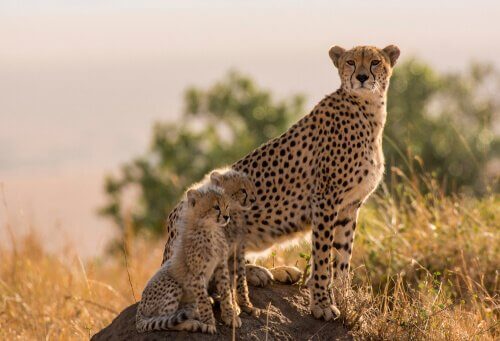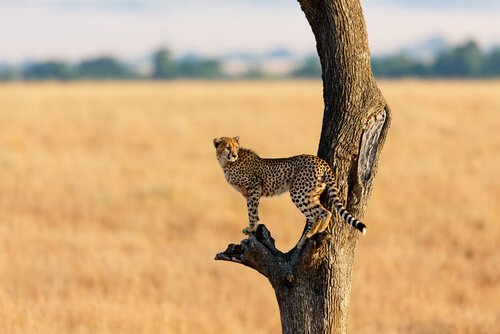Cheetah Conservation and Genetic Traits

Known as one of the fastest animals in the world, the cheetah is now classified as an endangered species. Cheetah conservation efforts show that without enough research to support this species, they’ll eventually become extinct. The threat to this Old World species of wild cat is due to several factors, and one of them is its peculiar history.
Conservation of the cheetah: its delicate genome
About 12,000 years ago, in the late Pleistocene, cheetahs already inhabited the American continent, as well as Europe and Asia. Their abrupt extinction in all of these areas produced what some call genetic bottleneck. This means that when there are few survivors of a species, then their genetic variability reduces. And, as a result, their descendants pay the consequences in their reproduction and resistance to infectious diseases –which are both highly important for cheetah conservation.
This low genetic variability and homozygosis, even higher than in species such as the mountain gorilla, had consequences. Cheetahs now have trouble reproducing, at least in captivity.
A study published in 1981 revealed that the semen concentration of several cheetahs was 10 times lower than that of domestic cats. And that 71% of them showed morphological alterations.

Added to these problems is the fact that cheetahs are polyestrous, which means they’ll come into heat more than once a year. This isn’t easy to tell, and so it makes it difficult to decide when to bring two animals together in their breeding and conservation programs.
Another issue in the conservation of the cheetah in terms of its resistance to diseases of an infectious origin is that the cheetah is very susceptible to diseases often found in domestic cats.
This includes conditions such as feline infectious peritonitis, which causes 60% mortality rates, compared to 2% in domestic cats. Interestingly, because of this genome, the cheetah’s body won’t reject skin grafts. Even when they’re from other individuals.
Current situation of the cheetah
The conservation of the cheetah is now more necessary than ever. There are currently less than 10,000 cheetahs left on the planet; a third of these inhabit Namibia. In the last 100 years, the cheetah population has declined by an alarming 90%.
Cheetahs are one of the wild cats that most prey on livestock in Africa. Perhaps this is because their prey is most likely to be stolen by other species, such as lions or hyenas. This caused a similar situation to that of the Iberian wolf. At the end of the 20th century, this conflict ended the lives of almost 1,000 animals each year.

Another threat to the conservation of the cheetah, in addition to infectious diseases, is its illegal trafficking.
To try to put an end to this, associations such as Cheetah Conservation Fund carry out educational activities, responsible ecotourism, and support for local livestock. All of this is done through the use of indigenous breeds of dogs specifically trained to protect livestock.
The dog breed that protects livestock against this predator, and thus encourages the conservation of the cheetah, is the Kangal Shepherd Dog, which is a great ally of the local farmers, and greatly helps to reduce the conflict between both parties.
All cited sources were thoroughly reviewed by our team to ensure their quality, reliability, currency, and validity. The bibliography of this article was considered reliable and of academic or scientific accuracy.
- Dobrynin, P., Liu, S., Tamazian, G., Xiong, Z., Yurchenko, A. A., Krasheninnikova, K., … & Kuderna, L. F. (2015). Genomic legacy of the African cheetah, Acinonyx jubatus. Genome biology, 16(1), 277.
- O’Brien, S. J., Roelke, M. E., Marker, L., Newman, A., Winkler, C. A., Meltzer, D., … & Wildt, D. E. (1985). Genetic basis for species vulnerability in the cheetah. Science, 227(4693), 1428-1434.
